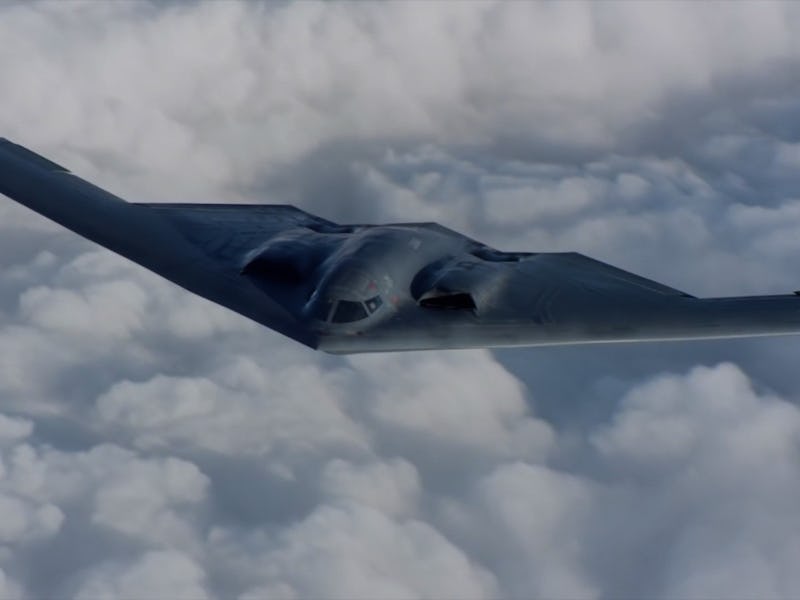The U.S. Air Force is making clear its plan to modernize the B-2 Stealth Bomber, developed in the 1980s during the end of the Cold War, to ensure the iconic spy plane will remain operational until 2058. The B-2 has flown in every U.S. military bombing campaign since the intervention in Kosovo, and the new upgrades will mean it remains an essential part of American airpower.
“It is a testament to the engineering team that here we are in 2016 and the B-2 is still able to do its job just as well today as it did in the ‘80s. While we look forward to modernization, nobody should come away with the thought that the B-2 isn’t ready to deal with the threats that are out there today,” Maj. Kent Mickelson, director of operations for 394th combat training squadron, told Scout Warrior. “It is really an awesome bombing platform, and it is just a marvel of technology.”
The B-2 offered American pilots the ability to coast behind Soviet radar and air defenses to drop conventional and nuclear weapons on high-value targets. While some of its communications and avionics technology needs a 21st-Century upgrade, the plane’s fundamental structure will remain competitive well past when many expected. In modern warfare, technology lifespan is usually measured in months and years, but never decades.
During the Iraq War, Vice President Cheney toured the B-2 and urged it be put to use.
It was one of the most secretive military projects in the world during its development, and to this day few images inside the plane actually exist publicly. In fact, two Northrop engineers have been convicted of espionage for selling information about the B-2 to the Soviet Union and other military adversaries.
The control panel of the B-2 Stealth Bomber contains highly classified technology and rarely, if ever, appears publicly.
“The B-2 represents a huge leap in technology from our legacy platforms such as the B-52 and the B-1 bomber. This involved taking the best of what is available and giving it to the aircrew,” Mickelson said.
Currently, only 20 of the B-2 remain in active service, and due to cutbacks following the end of the Cold War, only 21 were ever produced, down from an initial estimate of 132. The almost $1 billion price tag for each B-2 as well as significant upkeep costs left Congress to fund other military priorities than long-range tactical bombing. Nonetheless, in 2012, the Air Force began a 10-year, $2 billion modernization effort of the entire fleet.
This program will help with nuclear and conventional communications. It will provide a very big increase in the bandwidth available for the B-2, which means an increased speed of data flow. “We are excited about this upgrade,” Mickelson said.
Known for flying as long as 40 hours at a time, the plane is almost undetectable due to its unique shape and radar deflecting technology. The upgraded B-2 will also be able to receive live footage from nearby drones, improving the pilot’s ability to target locations accurately and avoid innocent bystanders as well as locate incoming adversaries.
“The whole key is to give us better situational awareness so we are able to make sound decisions in the cockpit about where we need to put the aircraft,” he added.
But perhaps the key reason why American pilots are so excited the B-2 will be sticking around is that, as the casual observer might imagine, it’s a whole lot of fun.
“It is a dream to fly. It is so smooth.” Michelson said.
